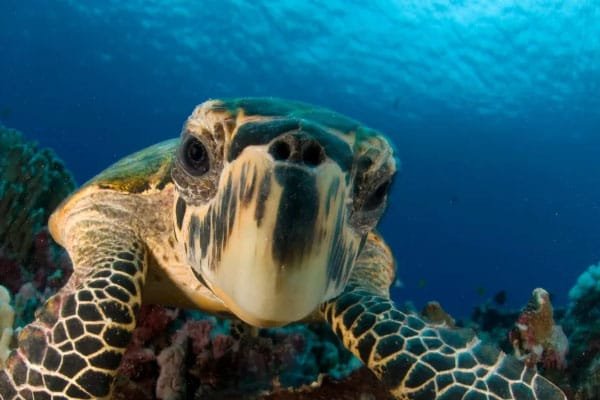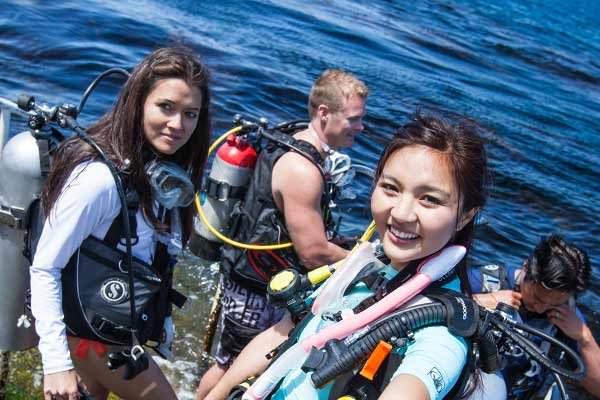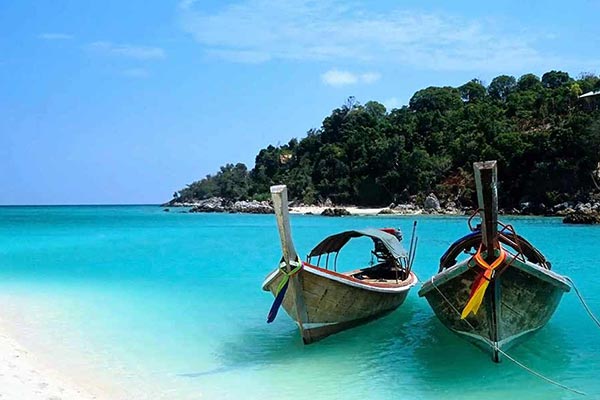As a diving instructor, you’ll meet fascinating sea creatures every day. Sea turtles are a common sight on many dive spots and a favorite for many divers. Every diver loves to watch a turtle! They’re graceful, peaceful, and sometimes full of surprises.
Let’s first look at the species of sea turtles that you may commonly encounter and how to tell them apart:
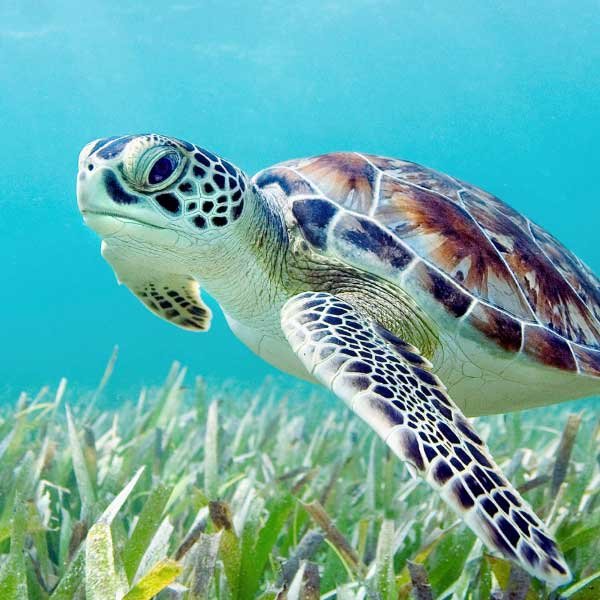
Green Turtle
Recognized by its smooth, oval-shaped shell and rounded beak. Feeds mainly on seagrass and algae. Found in tropical and subtropical waters worldwide. They’re actually called ‘green turtles’ because their diet causes their fat layer to have a greenish color.
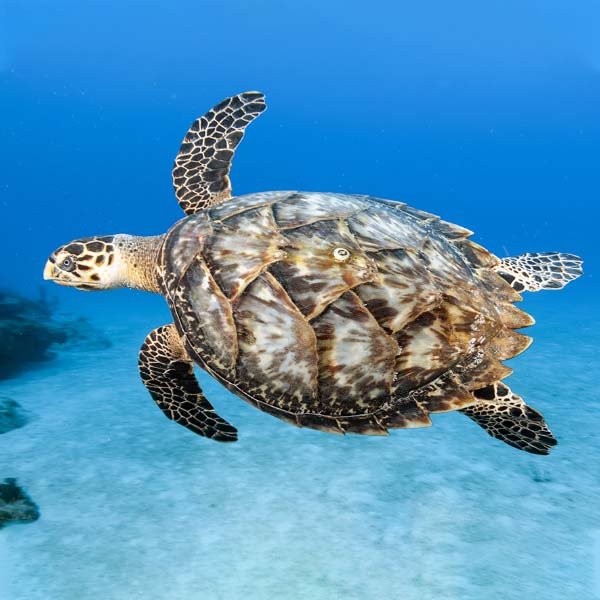
Hawksbill Turtle
Often mistaken for Green turtles, Hawksbill turtles have a distinctive pointed beak and overlapping scutes (shell plates) giving them a serrated look. Primarily feeds on sponges. Found in coral reef environments of the Indo-Pacific and the Caribbean.
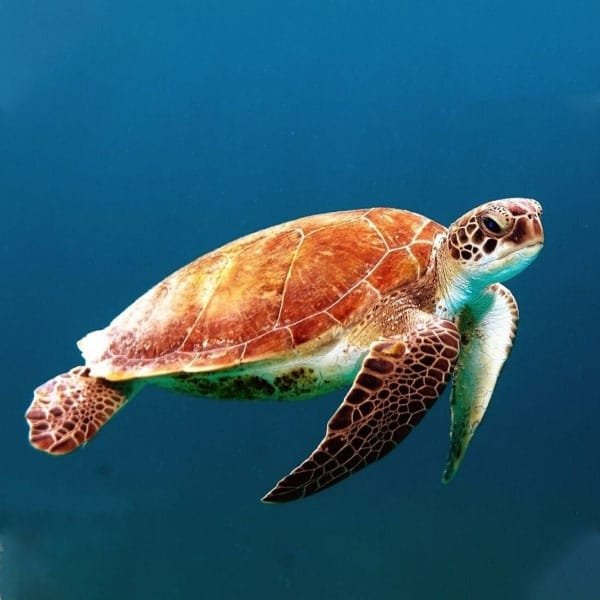
Loggerhead Turtle
Large head with powerful jaws, reddish-brown shell. Feeds on crustaceans and mollusks. Commonly found in the Atlantic, Pacific, and Indian Oceans.
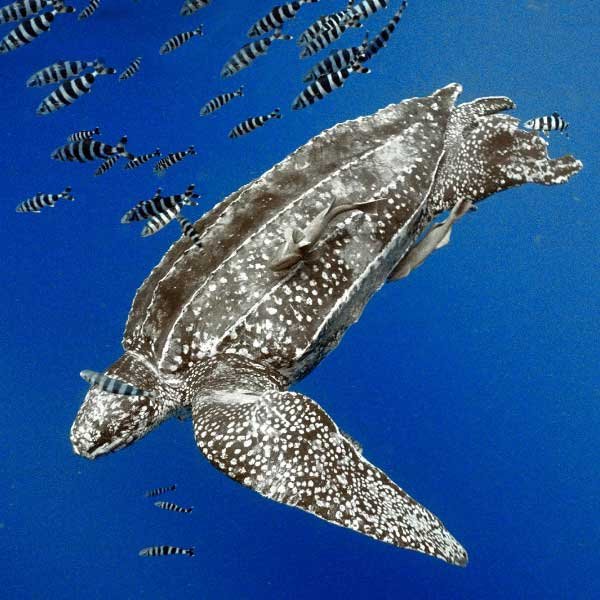
Leatherback Turtle
Largest sea turtle species with a soft, leathery shell. Feeds mainly on jellyfish. Found in both warm and cold waters, with the widest global range of any sea turtle.

Olive Ridley Turtle
Smallest sea turtle with a heart-shaped shell. Feeds on a variety of marine organisms, including jellyfish and crustaceans. Found in warm waters of the Pacific, Indian, and Atlantic Oceans.
10 interesting facts about sea turtles
While many divers may have seen sea turtles on several dives, reading these ten lesser-known facts will make you appreciate them even more!
1. Sea Turtles Can Hold Their Breath for Hours
While sea turtles are air-breathing reptiles, they are incredibly efficient at conserving oxygen. When resting or sleeping, some species can hold their breath for up to seven hours! Their slowed heart rate allows them to survive long dives without surfacing for air.
2. Their Shells Are Covered in Nerve Endings
Despite being hard, a turtle’s shell has nerve endings, meaning they can feel touch and pressure. So, next time you see one, remember that a turtle can sense a gentle brush against its shell and feel disturbed.
3. Sea Turtles Have Been Around Since the Age of Dinosaurs.
These ancient reptiles have survived mass extinctions and drastic climate changes. Fossil evidence suggests that sea turtles have remained relatively unchanged for over 100 million years, making them living fossils.
4. Epic Migrations
Some species, like the leatherback turtle, embark on epic migrations. They can travel over 10,000 miles annually between feeding and nesting grounds, making them one of the most well-traveled creatures in the ocean.
5. Hot Chicks, Cool Dudes
The phrase “hot chicks, cool dudes” applies perfectly to sea turtles. The temperature of their nests determines their gender.
Warmer nest temperatures produce female hatchlings, while cooler temperatures result in males. This delicate balance means that rising global temperatures could lead to more females and fewer males, which could impact their population.
6. Males and Females
Male sea turtles can be distinguished from females by their longer tails, which extend well past their shell. Females, on the other hand, have shorter tails that barely protrude from their shell. Additionally, males typically have larger and more curved claws on their front flippers, which help them grip females during mating.
7. Only 1 in 1,000 Hatchlings Survive to Adulthood
Sea turtle hatchlings face an uphill battle from the moment they emerge from their nests. Predators, human activity, and environmental threats mean that only a tiny fraction reach adulthood, making conservation efforts critical for their survival.
8. Obvious Threats
It’s sadly obvious that threats to sea turtles include habitat destruction, plastic pollution, industrial fishing (bycatch), and illegal poaching for their meat and shells. One major but often overlooked threat is light pollution which can disorient both nesting females and hatchlings. Bright artificial lights can confuse females when finding their nesting grounds. Hatchlings will instinctively move toward the brightest horizon (usually the ocean reflecting the moonlight), and can also become disoriented by artificial lights.
9. Amazing Age
Sea turtles can live for 50 to over 100 years, depending on the species. While it’s difficult to determine a turtle’s exact age, researchers estimate their age by examining growth rings on their shells and bones, much like tree rings.
10. Conservation Status
All sea turtle species are classified as vulnerable, endangered, or critically endangered according to the IUCN Red List. Conservation efforts such as protected marine areas, reducing plastic waste, and responsible tourism can help safeguard their future.
Next time you encounter a sea turtle on a dive, take a moment to appreciate these incredible creatures and their role in the ocean. Responsible diving and conservation efforts can help ensure future generations get to experience the magic of swimming alongside them.
Have you ever had an unforgettable sea turtle encounter? Share your story in the comments!

